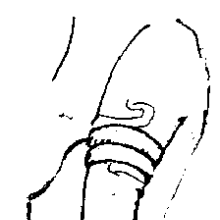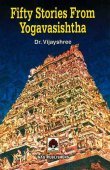Vyala, Vyāla: 25 definitions
Introduction:
Vyala means something in Hinduism, Sanskrit, Jainism, Prakrit, Marathi, Hindi, biology. If you want to know the exact meaning, history, etymology or English translation of this term then check out the descriptions on this page. Add your comment or reference to a book if you want to contribute to this summary article.
Vyala has 24 English definitions available.
Images (photo gallery)
Languages of India and abroad
Sanskrit dictionary
[Deutsch Wörterbuch]
Source: Cologne Digital Sanskrit Dictionaries: Böhtlingk and Roth Grosses Petersburger WörterbuchVyāla (व्याल):—(viāla [Atharvavedasaṃhitā] Padap.)
1) adj. a) tückisch, hinterlistig, boshaft, bösartig; = śaṭha [Amarakoṣa 3, 4, 26, 198.] [Hemacandra’s Anekārthasaṃgraha 2, 509.] = khala [Medinīkoṣa l. 48.] = dhūrta [Jaṭādhara im Śabdakalpadruma] Beiw. des Takman [Atharvavedasaṃhitā 5, 22, 6.] von Elephanten: gajaṃ vyālam [Kirātārjunīya 17, 25.] dvipa [Śiśupālavadha 12, 28.] gaja [Kathāsaritsāgara 37, 98.] vāraṇa [52, 118.] avyālaceṣṭita ein Elephant [Rāmāyaṇa 1, 6, 22 (25 Gorresio).] m. ein tückischer Elephant [Hemacandra’s Abhidhānacintāmaṇi 1222.] [Hemacandra’s Anekārthasaṃgraha] [Medinīkoṣa] [Halāyudha 2, 70.] [Spr. 2920.] — b) verschwenderisch [Halāyudha 5, 46.] —
2) m. a) ein tückischer Elephant; s. u.
1) a.) — b) Raubthier [Amarakoṣa] [Hemacandra’s Abhidhānacintāmaṇi 1216.] [Hemacandra’s Anekārthasaṃgraha] [Medinīkoṣa] [Halāyudha 5, 46.] [Manu’s Gesetzbuch 1, 39. 43.] [Mahābhārata 1, 1105. 7, 2239.] [Rāmāyaṇa 2, 95, 15.] [Suśruta 1, 4, 19. 24, 1. 89, 16.] [Spr. (II) 345. 3405. (I) 1740.] — c) Schlange [Amarakoṣa 1, 2, 1, 7. 3, 4, 26, 198.] [Hemacandra’s Abhidhānacintāmaṇi 1303.] [Hemacandra’s Anekārthasaṃgraha] [Medinīkoṣa] [Halāyudha 3, 18.] [Mahābhārata 3, 11978.] [Spr. (II) 2655. (I) 2460. 2609. 2919. 5046.] [Varāhamihira’s Bṛhajjātaka S. 19, 4. 33, 28.] als Verzierung an Indra's Banner [43, 57. 65.] [Sāhityadarpana 54, 1.] am Ende eines adj. comp. f. ā [Rājataraṅgiṇī 6, 88.] — b) c) unbestimmt ob Raubthier oder Schlange [Mahābhārata 3, 2355. 15668. 13, 5473.] [Rāmāyaṇa 2, 59, 10. 3, 55, 21. 5, 41, 37.] [Varāhamihira’s Bṛhajjātaka S. 16, 5.] [Rājataraṅgiṇī 8, 2188.] [Bhāgavatapurāṇa 1, 6, 14. 4, 7, 28. 7, 8, 29.] savyālā bhūḥ [KĀM. NĪTIS. 4, 53.] — d) Löwe [Hemacandra’s Anekārthasaṃgraha] Tiger und Panther [Rājanirghaṇṭa im Śabdakalpadruma] — e) König, Fürst [MATHUREŚA] zu [Amarakoṣa] nach [Śabdakalpadruma] — f) Bez. des zweiten Decans im Krebse, des ersten im Scorpion und des dritten in den Fischen [Varāhamihira’s Bṛhajjātaka 21 (19), 6.] — g) ein best. Metrum [Colebrooke 2, 164.] [Weber’s Indische Studien 8, 408,] [Nalopākhyāna 2.] — h) Nomen proprium eines Mannes: kula [Oxforder Handschriften 196,b,23.] —
3) f. ī Schlangenweibchen [Mahābhārata 3, 16143. 16191. 5, 7071. 9, 579. 14, 2455.] [Rāmāyaṇa] [Gorresio 2, 34, 9. 75, 17. 5, 26, 2.] [Mṛcchakaṭikā 10, 19.] [Raghuvaṃśa 12, 32.] [WEBER, KṚṢṆAJ. 221.] —
4) n. Bez. einer der 3 Stadien in der retrograden Bewegung des Planeten Mars [Varāhamihira’s Bṛhajjātaka S. 6, 3.]
Sanskrit, also spelled संस्कृतम् (saṃskṛtam), is an ancient language of India commonly seen as the grandmother of the Indo-European language family (even English!). Closely allied with Prakrit and Pali, Sanskrit is more exhaustive in both grammar and terms and has the most extensive collection of literature in the world, greatly surpassing its sister-languages Greek and Latin.
See also (Relevant definitions)
Starts with (+34): Vyalabala, Vyalabhushana, Vyalabhushanadharin, Vyaladamshtra, Vyaladamshtraka, Vyaladanshtraka, Vyaladhya, Vyaladreshkana, Vyalagaja, Vyalagamdhi, Vyalagandha, Vyalagna, Vyalagraha, Vyalagrahin, Vyalagrahini, Vyalagriva, Vyalahara, Vyalajihva, Vyalaka, Vyalakamkana.
Ends with: Bhitavyala, Durvyala, Jalavyala, Krishnavyala, Salilavyala, Shikhavyala.
Full-text (+64): Vyalagrahin, Jalavyala, Vyalagraha, Vyalamriga, Vyada, Vyalatva, Vyaladreshkana, Vyalatama, Vyalarupa, Vyalakhadga, Vyalayudha, Vyalanakha, Vyalaka, Vyalapanija, Vyalapraharana, Vyalagrahini, Vyalakaraja, Vyalashiksha, Vyalabala, Vyaladamshtraka.
Relevant text
Search found 34 books and stories containing Vyala, Vyāla, Vyāḷa; (plurals include: Vyalas, Vyālas, Vyāḷas). You can also click to the full overview containing English textual excerpts. Below are direct links for the most relevant articles:
Matangalila and Hastyayurveda (study) (by Chandrima Das)
Nitiprakasika (Critical Analysis) (by S. Anusha)
Jain Remains of Ancient Bengal (by Shubha Majumder)
Pañca-tirthika type of Śāntinātha Sculptures < [Chapter 6 - Iconographic Study of Jaina Sculptural Remains]
Ṛṣabhanātha sculptures with miniature Tīrthaṅkaras and Planetary deities < [Chapter 6 - Iconographic Study of Jaina Sculptural Remains]
Miniature Tīrthaṅkara and Planatary Deities type of Śāntinātha < [Chapter 6 - Iconographic Study of Jaina Sculptural Remains]
Yoga Vasistha [English], Volume 1-4 (by Vihari-Lala Mitra)
Chapter XXVII - Admonition of brahma < [Book IV - Sthiti prakarana (sthiti prakarana)]
Chapter XXV - Narrative of dama, vyala and kata < [Book IV - Sthiti prakarana (sthiti prakarana)]
Chapter XXXIV - End of the story of dama and vyala < [Book IV - Sthiti prakarana (sthiti prakarana)]
Sahitya-kaumudi by Baladeva Vidyabhushana (by Gaurapada Dāsa)
Text 7.108 < [Chapter 7 - Literary Faults]
Hanuman Nataka (critical study) (by Nurima Yeasmin)
Hanuman-Nāṭaka, Act 13 (Summary) < [Chapter 3]
Related products






